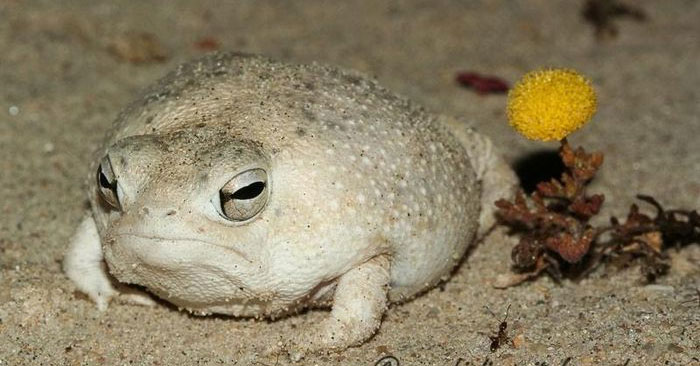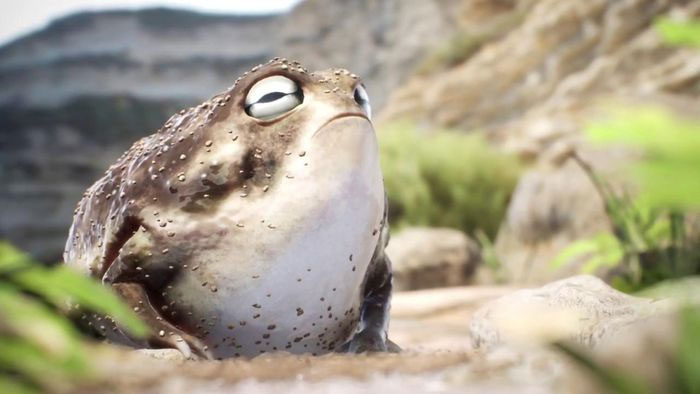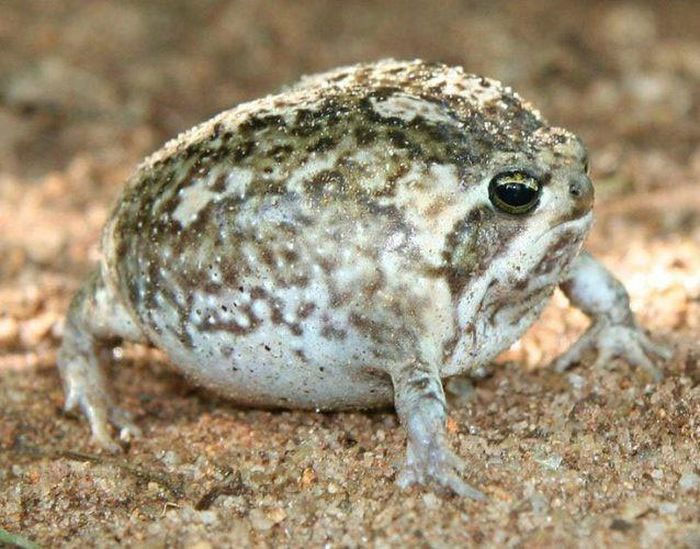Desert Rain Frog - A strange chubby frog that makes a 'horrifying' screaming sound
The Desert Rain Frog, scientific name Breviceps macrops, is one of the strangest and rarest frogs in the world.
This is a small, flaccid frog; bulging eyes, short nose, short and webbed legs. Their skin is yellow brown and often sandy. The skin under their abdomen is transparent, internal organs can be seen.

Desert rain frogs lay eggs and the eggs develop directly into frogs, skipping the intermediate stage of development into tadpoles.
Desert rain frogs have a special defense. When in danger, they emit extremely "terrifying" screaming sounds to threaten their enemies.

Photographer Dean Boshoff got close enough to this frog and recorded the 'scary' sound they make. If you're brave enough, please listen to the video below.
The desert rain frog is native to Namibia and South Africa. Most of the day they hide deep in the sand, trying to cool and moisturize their bodies. They only come out of their hiding places when they are hungry to find prey. Their favorite foods are insects, bugs and moths. Their enemies are snakes and scorpions. Each time they hunt, the desert rain frog can catch more than 100 insects.

Currently, the desert rain frog species is in an endangered state, recorded in the IUCN Red List (international union for conservation of nature). The reason is because their habitat is destroyed by road opening activities. and human diamond mining.
You should read it
- The ancient demon toad with 2,200 newton biting force, kills the dinosaur with a bite
- Scientists were stunned when they discovered the South American frog fossils in Antarctica
- Two new frog species are named after legendary filmmaker Stanley Kubrick
- Minecraft: When will Frog mobs officially land?
- The greatest frog father on the planet, swallowing tadpoles emitting a frog frog
- Atacama, the driest desert in the world, suddenly turns into colorful flowers after the rain
 The journey to transport the world's largest camera to the top of the mountain is more than 2,700m
The journey to transport the world's largest camera to the top of the mountain is more than 2,700m NASA 'changes' the birth dates of 12 zodiac signs, 86% of people will have their constellation changed to another star sign
NASA 'changes' the birth dates of 12 zodiac signs, 86% of people will have their constellation changed to another star sign Human blood turns green when deep in the ocean, why?
Human blood turns green when deep in the ocean, why? Snakes are tiny like worms, the whole species is only female, there are no males
Snakes are tiny like worms, the whole species is only female, there are no males The rare fish species only had 37 left, living in Devil's Hole
The rare fish species only had 37 left, living in Devil's Hole The fish is small but can make a sound as loud as a gunshot
The fish is small but can make a sound as loud as a gunshot